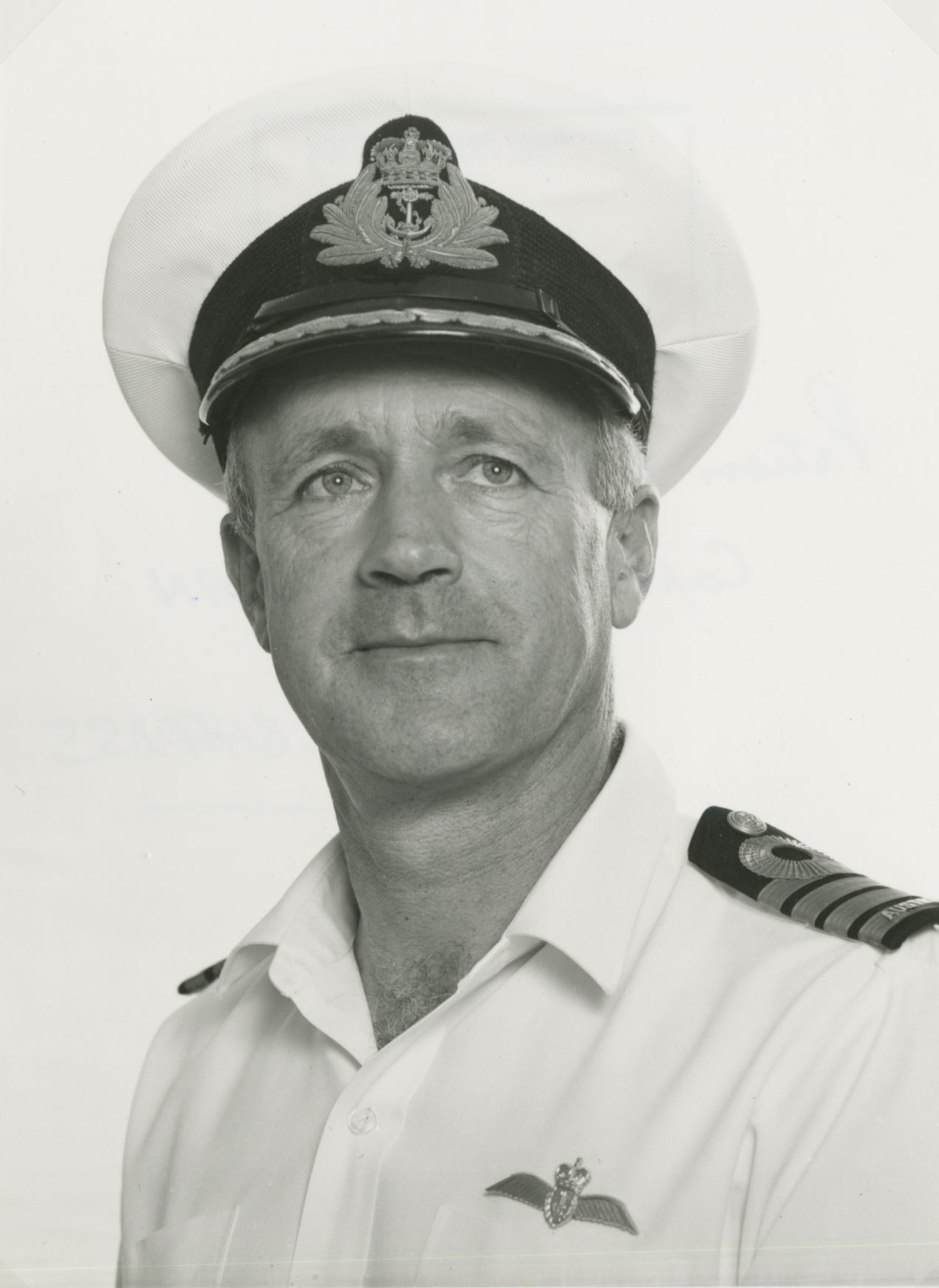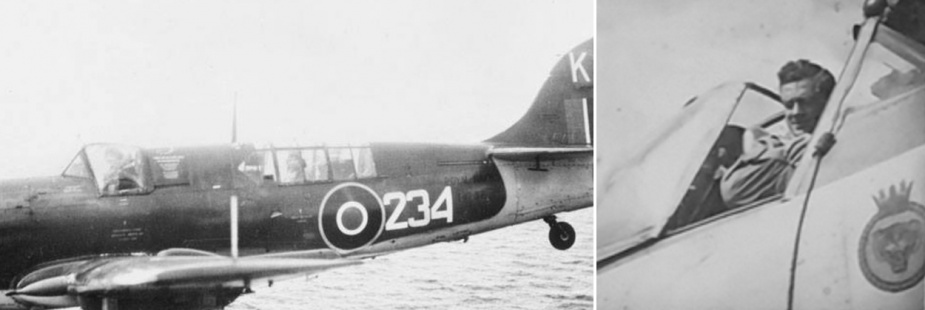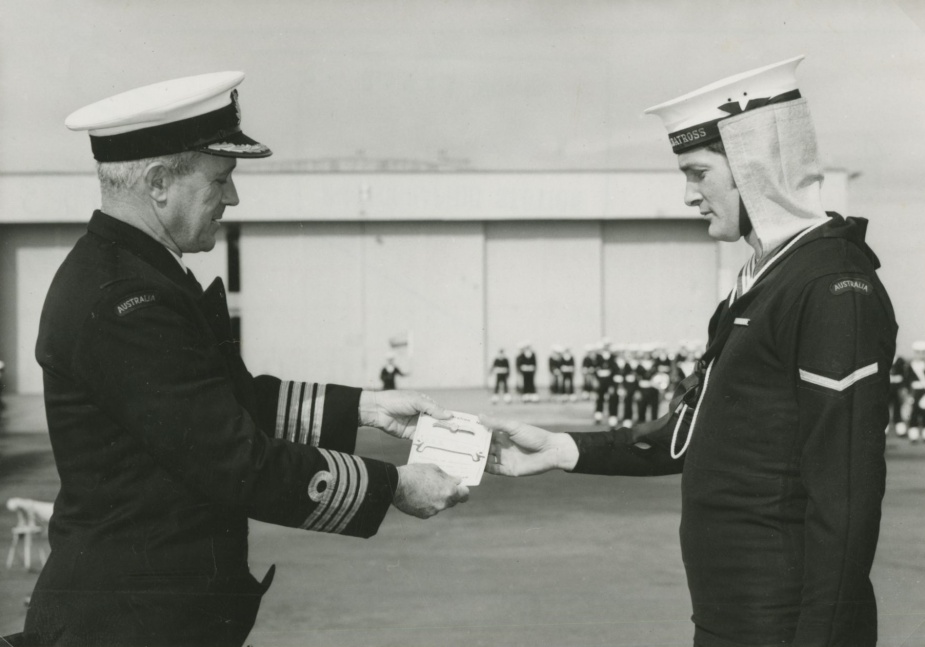Commodore John Douglas Goble

John Douglas Goble was born in Brighton, Victoria on 12 April 1923, one of three sons to Kathleen and Stanley Goble. Stanley, a World War I fighter ace and pioneering aviator, later attained the rank of Air Vice Marshal and was in commanded the Royal Australian Air Force at the outbreak of World War II.
At the age of 13 years and 9 months, John joined the Royal Australian Naval College in January 1937 gaining his sporting colours for athletics in 1940 and being made a Cadet Captain. On Sunday, 1 December 1940 he passed out of the College, immediately posting to the heavy cruiser HMAS Canberra, then undertaking escort duties to Malaya, New Guinea and Singapore. When Canberra went into refit in 1942, John joined HMAS Australia and was serving in the cruiser when Stoker John Riley became the first person murdered onboard an RAN ship during wartime. The ship saw action in both the Coral Sea and the Solomon Islands before John was sent to the United Kingdom to undertake training for promotion to Lieutenant.
On completion of those courses in January 1944 John expressed a strong desire to serve in destroyers, instead, he was appointed to the 541st Landing Craft Assault Flotilla, based at Queensferry. Although not where he had expected to be, this posting was to see John take part in the historic D-Day landings on 6 June 1944, during which his Landing Craft Assault (LCA) was sunk when it struck a booby-trapped underwater obstacle killing two of the four crew. Many years later in November 2015, the French Government recognised John’s involvement in this historic event when General Jean-Louis Georgelin awarded him the French Legion of Honour.
John’s wartime service continued in HMS Battler, an escort aircraft carrier based at Trincomalee, Sri Lanka. After the war ended, John remained in the United Kingdom until 1948, during which time he became one of the first RAN officers to qualify as a pilot, serving in 827 Squadron onboard HMS Triumph. In 1949 John returned to Australia as a member of 816 Squadron flying the Fairey Firefly AS-5 aircraft embarked in the Majestic Class light aircraft carrier HMAS Sydney (III).
The early 1950s saw John return to the UK to undertake further training before taking up a position as a flying instructor at the UK RAF Central Flying School. Promoted Lieutenant Commander in 1953, John returned to Australia and on 13 October assumed command of 817 Squadron. He remained in command until 3 August 1955, overseeing the Squadron’s decommissioning on 27 April at Naval Air Station (NAS) Nowra.
John saw out the 1950s in a variety of appointments including serving on the Naval Aviation Staff, one year as Executive Officer of the Battle Class destroyer HMAS Tobruk and finally as Commander (Air) in the aircraft carrier HMAS Melbourne (II). After attending the United States Armed Services Staff College in 1960, the then Commander Goble returned to Australia as Commander (Air) at NAS Nowra, before being unexpectedly posted as the inaugural Executive Officer of the newly commissioned Tide Class replenishment oiler HMAS Supply in August 1962.
The period 1964 to 1968 saw John based in Canberra. It was during his time as Director Naval Air Policy that the Australian Government approved the acquisition of both the S2E Tracker and A4G Skyhawk aircraft. Promoted Captain in 1966, John then spent two years in the Joint Planning Group. Following his time in Canberra, John returned to sea, taking command of the Daring Class Destroyer HMAS Vampire (II) in January 1969. The ship spent most of that year deployed in the Far East performing maritime security work, undertaking maintenance in Singapore and Hong Kong before returning to Sydney in October.
The following year, on 8 January 1970, John was appointed in command of the Escort Maintenance ship HMAS Stalwart (II), in which he celebrated her second birthday on 10 February. On 19 February 1971, Captain Goble was appointed Commanding Officer NAS Nowra until May 1972 when he was posted in charge of the RAN Trials and Assessment Unit at Edgecliffe in Sydney. Having already served as Commander (Air) in Melbourne in 1958-59, John assumed command of the RAN flagship on 19 June 1973 overseeing the final stages of a major refit at Garden Island Dockyard in Sydney.
On 18 December 1973 John commenced what was to be his final posting when he was appointed Chief of Staff to the Flag Officer Commanding Australian Fleet (FOCAF).
Promoted Commodore in December 1973, John retired from the RAN on 2 February 1976 after 39 years of service. He then pursued a second career path in the law. He was admitted as a solicitor to the NSW Supreme Court in December 1979 and retired, for the second time, in 1992. In retirement he was a driving force behind the establishment of the Fleet Air Museum at Nowra and was an active member of the Australian Society of World War I Aero Historians.
John Douglas Goble died peacefully in Sydney on 31 May 2016 aged 93.




